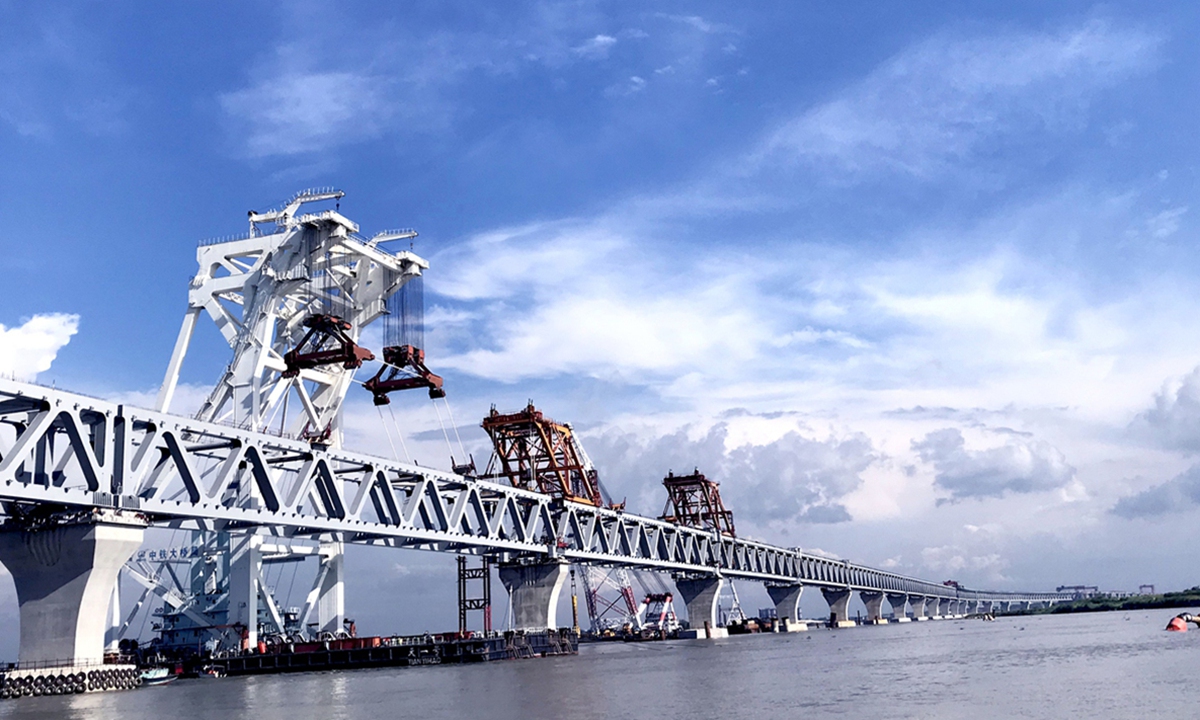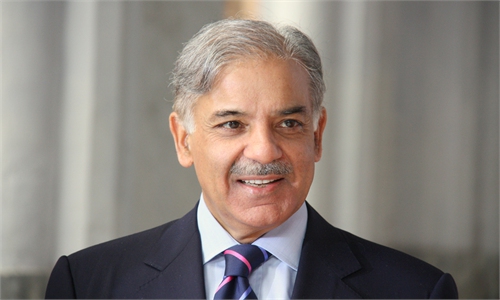
The Chinese-built Padma Bridge Project is Bangladesh's largest bridge project. Photo: Xinhua
The Prime Minister of Bangladesh is visiting China from Monday to Wednesday. Comprehensive Economic Partnership Agreement talks and 17 MoUs are expected to be featured during the visit. In recent years, Bangladesh's relationship with China has grown significantly, fostering mutual benefits and strategic cooperation. This evolving partnership, rooted in historical ties and shared aspirations for economic development, holds immense potential for both nations. However, it also comes with complexities that require careful navigation to ensure a balanced and sustainable future.The diplomatic relationship between Bangladesh and China dates back to 1975, shortly after Bangladesh's independence. The two countries' historical connection extends beyond formal diplomatic ties. Cultural and economic exchanges date back to ancient times, when the Silk Road facilitated interactions between South Asia and China. This deep-rooted history provides a cultural affinity that enhances modern diplomatic relations, especially after Chinese President Xi Jinping's visit to Bangladesh in October 2016. The visit yielded the signing of 27 deals between the government and 13 joint venture agreements between Bangladeshi and Chinese companies involving around $40 billion commitment.
The Padma Bridge, a multi-purpose road-rail bridge across the Padma River, is a landmark project symbolizing the depth of Bangladesh-China cooperation. With an estimated cost of $3.86 billion, partly financed by Chinese loans and technical assistance, the bridge is expected to boost Bangladesh's GDP by 1.2 percent by improving connectivity and reducing travel time across the country. Similarly, the Payra Power Plant, a coal-fired power station, is a key project under the BRI, aimed at meeting Bangladesh's growing energy demands and reducing its dependence on costly fuel imports.
The strategic dimension of Bangladesh-China relations cannot be overlooked. Bangladesh's geographical location makes it a crucial player in South Asia and a gateway to the Indian Ocean. For China, deepening ties with Bangladesh contributes to securing vital maritime routes.
China's strategic interests in Bangladesh are evident in the development of the Chittagong Port, one of the busiest ports in South Asia. This development aligns with China's Maritime Silk Road initiative, which seeks to connect Chinese ports with those in Asia, Africa, and Europe.
However, this growing closeness between Dhaka and Beijing raises concerns among other regional players, particularly India. As it deepens ties with China, Bangladesh must continue to ensure its balanced and independent foreign policy, fostering positive relations with all major powers, including India and the US.
India, which shares deep historical, cultural, and economic ties with Bangladesh, has cautiously viewed China's increasing influence in its neighborhood. Despite this, Bangladesh has adeptly managed its relations with both giants, ensuring its development agenda benefits from cooperation with China and India. Evidently, the recent visit of PM Hasina to India and China within a couple of weeks is a testament to Bangladesh's balanced foreign policy objectives.
There are challenges facing China-Bangladesh relations, such as the trade imbalance and how Bangladesh can effectively manage risks posed by loans. However, noticeably, Bangladesh has so far managed to maintain a win-win scenario in taking Chinese loans. Moreover, both nations stand to gain from deepening cooperation in various sectors, including technology, education, and healthcare. Joint ventures in renewable energy and climate resilience can further enhance this partnership, addressing global challenges while promoting sustainable development.
China's expertise in digital infrastructure and technology can support Bangladesh's ambitions to become a digital economy. Investments in areas such as 5G networks, e-commerce, and digital payment systems can drive innovation and economic growth. Additionally, educational exchanges and scholarships can foster knowledge transfer and skill development, empowering Bangladesh's youth to contribute to the country's development.
Healthcare is another area where Bangladesh can benefit from closer ties with China. The COVID-19 pandemic underscored the importance of international cooperation in healthcare. China's provision of medical supplies and vaccines to Bangladesh during the pandemic was a testament to the solidarity between the two nations. Building on this cooperation, joint efforts in healthcare infrastructure and pharmaceutical production can enhance Bangladesh's healthcare system and ensure better health outcomes for its population.
To conclude, the relationship between Bangladesh and China is multifaceted, encompassing economic, strategic, and cultural dimensions. While there are challenges to be managed, the potential benefits of this partnership are significant. Through continued dialogue, mutual respect, and strategic cooperation, Bangladesh and China can chart a path toward a prosperous future, contributing to regional stability and global development.
The author is an MBA student at Zhejiang Normal University. He is also a freelance research analyst on international strategic affairs and cross border economic studies. opinion@globaltimes.com.cn



